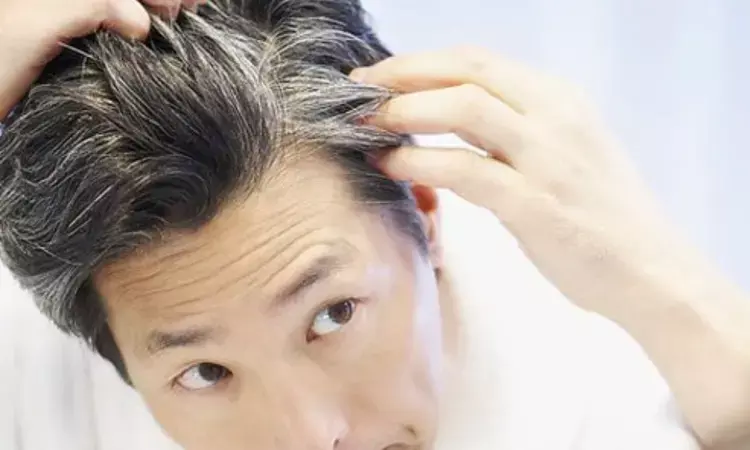- Home
- Medical news & Guidelines
- Anesthesiology
- Cardiology and CTVS
- Critical Care
- Dentistry
- Dermatology
- Diabetes and Endocrinology
- ENT
- Gastroenterology
- Medicine
- Nephrology
- Neurology
- Obstretics-Gynaecology
- Oncology
- Ophthalmology
- Orthopaedics
- Pediatrics-Neonatology
- Psychiatry
- Pulmonology
- Radiology
- Surgery
- Urology
- Laboratory Medicine
- Diet
- Nursing
- Paramedical
- Physiotherapy
- Health news
- Fact Check
- Bone Health Fact Check
- Brain Health Fact Check
- Cancer Related Fact Check
- Child Care Fact Check
- Dental and oral health fact check
- Diabetes and metabolic health fact check
- Diet and Nutrition Fact Check
- Eye and ENT Care Fact Check
- Fitness fact check
- Gut health fact check
- Heart health fact check
- Kidney health fact check
- Medical education fact check
- Men's health fact check
- Respiratory fact check
- Skin and hair care fact check
- Vaccine and Immunization fact check
- Women's health fact check
- AYUSH
- State News
- Andaman and Nicobar Islands
- Andhra Pradesh
- Arunachal Pradesh
- Assam
- Bihar
- Chandigarh
- Chattisgarh
- Dadra and Nagar Haveli
- Daman and Diu
- Delhi
- Goa
- Gujarat
- Haryana
- Himachal Pradesh
- Jammu & Kashmir
- Jharkhand
- Karnataka
- Kerala
- Ladakh
- Lakshadweep
- Madhya Pradesh
- Maharashtra
- Manipur
- Meghalaya
- Mizoram
- Nagaland
- Odisha
- Puducherry
- Punjab
- Rajasthan
- Sikkim
- Tamil Nadu
- Telangana
- Tripura
- Uttar Pradesh
- Uttrakhand
- West Bengal
- Medical Education
- Industry
Can greying of hair reversed finds new Study

A novel technique of quantifying current life history in hair pigment patterns may enable us to longitudinally investigate the impact of current life exposure to human bio-behavioral factors, suggests a study published in the eLife journal.
Greying of the hair greying is an obvious sign of aging that disturbs most individuals. Melanin, a pigment found in the skin, eyes, and hair is, responsible for imparting color to all of them. While the loss of hair color is caused due to the loss of melanin. There have been numerous studies in mice suggesting that mental stress may quicken hair greying, however, no such definitive research has been conducted on humans. The reason for this is because the unavailability of specific research tools to accurately map mental stress and hair color over time.
A study was conducted by Rosenberg et al. to demonstrate a new method to digitize and quantify physical timescales of rapid hair color dynamics to profile hair pigmentation patterns (HPPs) along individual human hair shafts.
The researchers found that white/grey hair naturally retrieved pigmentation among all sex, ethnicities, ages, and body regions, thus, quantitatively defining the reversibility of hair greying in humans. They also found that hair greying and reversal may occur in parallel with psychological stressors, through a combination of hair pigmentation patterns profiling and proteomics on a single hair.
To generalize these observations, Rosenberg et al. developed a mathematical model that simulates the greying of an individual over his/her lifetime, an experiment that is not possible with living people. According to this computerized model suggested there might be a threshold for temporary greying; if hairs are about to go grey anyway, a stressful event may accelerate the greying process. Following the stressful event, if a hair is just above the threshold, it could regain its color.
The computational simulation thus developed suggests a threshold-based mechanism for the temporary reversibility of greying.
Thus, the researchers concluded that this new method for measuring minor hair color dynamics may enable us to potentially use hair pigmentation patterns like tree rings as they would help us to monitor the impact of past life events on human biology. And in the future, tracking hair pigmentation patterns could help to trace the efficacy of treatments aimed at reducing stress or slowing the aging process.
This result provides a plausible biological basis for the rapid reversibility of greying and its association with psychological factors, and also supports the possibility that this process could be targeted pharmacologically.
Reference:
Quantitative mapping of human hair greying and reversal in relation to life stress by Rosenberg A et. al published in the eLife journal.
DOI: 10.7554/eLife.67437
Dr. Shravani Dali has completed her BDS from Pravara institute of medical sciences, loni. Following which she extensively worked in the healthcare sector for 2+ years. She has been actively involved in writing blogs in field of health and wellness. Currently she is pursuing her Masters of public health-health administration from Tata institute of social sciences. She can be contacted at editorial@medicaldialogues.in.
Dr Kamal Kant Kohli-MBBS, DTCD- a chest specialist with more than 30 years of practice and a flair for writing clinical articles, Dr Kamal Kant Kohli joined Medical Dialogues as a Chief Editor of Medical News. Besides writing articles, as an editor, he proofreads and verifies all the medical content published on Medical Dialogues including those coming from journals, studies,medical conferences,guidelines etc. Email: drkohli@medicaldialogues.in. Contact no. 011-43720751


